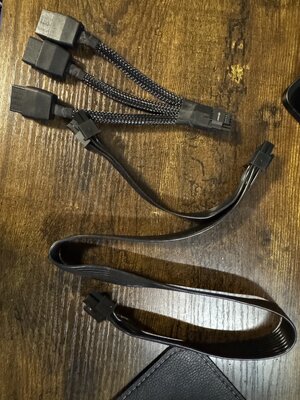- Joined
- Nov 2, 2003
- Messages
- 13,585
- Reaction score
- 3,899
Received my PC yesterday. Beautiful machine, however, I got the 5080 grey screen of death. Absolutely nothing loads. I can get into the BIOS thought the motherboard HDMI but that doesn’t do me any good. Been struggling to figure out why. So far, this is what I’ve done:
System Troubleshooting Summary – April 19, 2025
PC & GPU Details:
System Troubleshooting Summary – April 19, 2025
PC & GPU Details:
- GPU: Gigabyte GeForce RTX 5080 Gaming OC
- Motherboard: MSI PRO B850-P WiFi
- CPU: AMD Ryzen 7 9800X3D
- RAM: 32GB DDR5 (2x16GB)
- Storage: Dual 2TB NVMe SSDs (4TB total)
- Power Supply: 1000W 80+ Gold Modular PSU
- Display Output: HDMI only
- OS: Attempting clean Windows 11 install (build 24H2)
- GPU is securely seated in PCIe x16 slot
- 12V-2x6 power cable is fully inserted (no signs of partial engagement)
- No blinking LEDs or warning indicators on GPU (per Gigabyte’s diagnostic LED system)
- RGB/branding on GPU is illuminated, confirming at least standby power
- PSU switch is in the ON position, cable tested and reinserted
- Verified all PSU modular cables are seated correctly
- Verified CPU cooler, case fans, and GPU fans power on
- Tested with multiple HDMI cables
- Tried multiple monitors (including a BenQ)
- Plugged directly into:
- Motherboard HDMI (iGPU)
- GPU HDMI port
- Only output received was via motherboard HDMI
- No display from GPU, even though it is powered
- Entered BIOS successfully (MSI Click BIOS X)
- Enabled PEG as primary graphics adapter
- Set Graphics Card Detection to “Enabled”
- Verified PCIe settings (PCIe Gen Auto → PCIe Gen 4)
- Re-checked Resize BAR and Secure Boot options
- Memory, CPU, and SSDs are detected properly
- BIOS is latest version as of March 13, 2025
- Used Windows 11 Media Creation Tool and Rufus (twice):
- Created bootable USB with GPT + UEFI (non-CSM) config
- Used official Windows 11 24H2 ISO
- Attempted to install to clean unallocated drive space
- Got repeated “Windows 11 installation has failed” errors
- Also encountered error: “Windows cannot complete installation in Safe Mode”
- Switched USB ports (2.0 and 3.0) during testing
- Verified drives were GPT with diskpart (Disk 0 and Disk 1 both clean and GPT)
- Tried diskpart cleaning and formatting steps multiple times
- Able to boot into BIOS and Windows Recovery
- Occasionally hit grey screen or hang after MSI splash screen
- Reached Advanced Options → Command Prompt
- Attempted to manually run setup.exe from installation media
- Boot menu showed two partitions for USB, tried both
- Installation failed repeatedly near completion
- All hardware appears powered
- GPU lights up, shows no diagnostic faults
- Windows 11 installation persistently fails even with multiple rebuilds of the USB
- System sometimes defaults to BIOS or hangs on splash/loading
- No POST or output ever seen from GPU HDMI port
- iGPU works temporarily but leads to Safe Mode loops or failed boots

